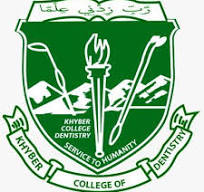FINGERPRINT PATTERN AND ITS GENDER DISTRIBUTION AMONG MEDICAL AND DENTAL STUDENTS OF KHYBER MEDICAL COLLEGE AND KHYBER COLLEGE OF DENTISTRY, PESHAWAR
DOI:
https://doi.org/10.33279/jkcd.v11i04.97Keywords:
Dactyloscopy, finger print pattern, genderAbstract
Objective: To assess the relationship between the fingerprint pattern and gender
Materials and Methods:A cross-sectional study conducted having 400 healthy medical and dental students of Khyber Medical College and Khyber College of dentistry, Peshawar. The study was done by categorizing the pattern into arches, loops and whorls. The statistical analysis was done by using frequency distribution and non-parametric test i.e. chi square test. A P value of < 0.05
was considered statistically significant.
Results: The fingerprint pattern prevalence showed that the predominant pattern was 58.55% (loops) followed by 32.65% (whorl) and 8.8% (arch). A significant relationship between the fingerprint patterns and gender (P < 0.05) was also observed.
Conclusion: The conclusions drawn from the study is that loops are the most commonly found finger print pattern and arches are the least common in both male and females
Downloads
Published
How to Cite
Issue
Section
License
Copyright (c) 2021 Muhammad Junaid, Asif Kamal, Zainab Rehman, Shazia Iftikhar, Shahab Uddin, Waqar Ahmad

This work is licensed under a Creative Commons Attribution-NonCommercial-NoDerivatives 4.0 International License.
You are free to:
- Share — copy and redistribute the material in any medium or format
- Adapt — remix, transform, and build upon the material
- The licensor cannot revoke these freedoms as long as you follow the license terms.
Under the following terms:
- Attribution — You must give appropriate credit , provide a link to the license, and indicate if changes were made . You may do so in any reasonable manner, but not in any way that suggests the licensor endorses you or your use.
- NonCommercial — You may not use the material for commercial purposes .
- No additional restrictions — You may not apply legal terms or technological measures that legally restrict others from doing anything the license permits.










